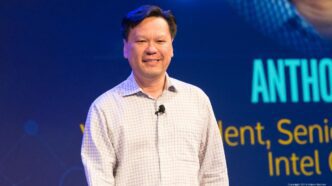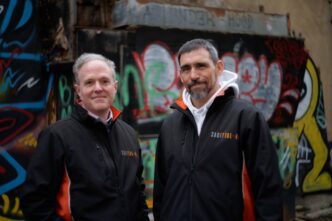Intel Capital decision to spin out from semiconductor giant Intel in January came as a surprise. Given its longstanding role as Intel’s venture investment arm since 1991. This move signals the end of an era for what many consider to be the first corporate venture capital firm. With a legacy spanning nearly 35 years and investments in notable enterprise tech companies such as DocuSign, MongoDB, and Hugging Face, among nearly 2,000 others.
For Mark Rostick, Vice President and Senior Managing Director at Intel Capital, the transition represents an opportunity for growth while maintaining many of the advantages it had as a corporate venture capital (CVC) firm. Rostick, who joined Intel Capital in 1999, initially sought the position after a friend’s recommendation. Dissatisfied with his role as a tech licensing attorney, he eagerly took the opportunity, stating he would do anything—even mop floors—to be part of the team.
“You get to work with the smartest people in the world,” Rostick said. “The hardest thing in business is to start something from nothing and get it off the ground. Those are the people doing something special, and I wanted to be part of that.”
Over the past two decades, Intel Capital has invested over $20 billion across more than 1,800 companies. And has facilitated over 700 startup exits. The idea of spinning out had been discussed multiple times, weighing the benefits of increased agility against the loss of corporate backing. However, serious discussions began in early 2024 and solidified last fall. Rostick and Intel Capital head Anthony Lin worked to prepare the team for independence.
“We believed our track record warranted interest from outside investors,” Rostick explained. “Even while much of the venture industry struggled with exits, we had success and positioned ourselves as an outlier.”
Astera Labs’ exit played a crucial role in the timing of the spinoff. Intel Capital invested in Astera Labs in 2018, and the semiconductor company went public in March 2024 with a $5.5 billion valuation. Within a year, its market cap grew to $9.8 billion, making it one of the most successful venture-backed exits of 2024. This achievement demonstrated to potential limited partners (LPs) that Intel Capital was making the right investments and seeing returns in a challenging exit environment. In 2023, U.S. venture-backed exits totaled $149.2 billion—significantly lower than pre-pandemic years like 2019 ($312 billion), excluding the outlier year of 2021 ($841 billion), according to PitchBook data.
Despite the optimism, not everyone at Intel Capital appeared to be on board with the transition. Several long-time managing directors, including Mark Lydon, Arun Chetty, Sean Doyle, and Tammi Smorynski, left the firm during the spinoff discussions. An Intel Capital spokesperson stated that these departures were unrelated to the spinout.
Meanwhile, Intel, the firm’s parent company, has faced a turbulent period. Former CEO Pat Gelsinger abruptly retired on December 1, having been involved in the spinoff discussions. Intel has also delayed the opening of its Ohio chip factory and scrapped its Falcon Shores AI chip project. Additionally, the company appointed Lip-Bu Tan as its new CEO, signaling potential strategic changes.
Despite these challenges, Intel Capital remains committed to the spinoff. Rostick stated that the firm expects to be fully independent by the third quarter of 2025. The newly named firm will retain Intel as an anchor investor and continue its focus on early-stage startups in AI, cloud computing, devices, and frontier technology. Fundraising efforts are expected to commence shortly after the official separation.
“We’ve introduced the idea to investors and received a positive response,” Rostick said. “We’re not naive—we know it will be a challenging process.”
The market will ultimately determine the success of Intel Capital’s transition into an independent firm. However, Rostick emphasized that, for now, it’s business as usual.
“We’re actively investing in new opportunities, managing our portfolio, and facilitating exits as we always have,” he said. “When we complete the transition, we’ll keep operating at the same pace. That has always been the plan.”











